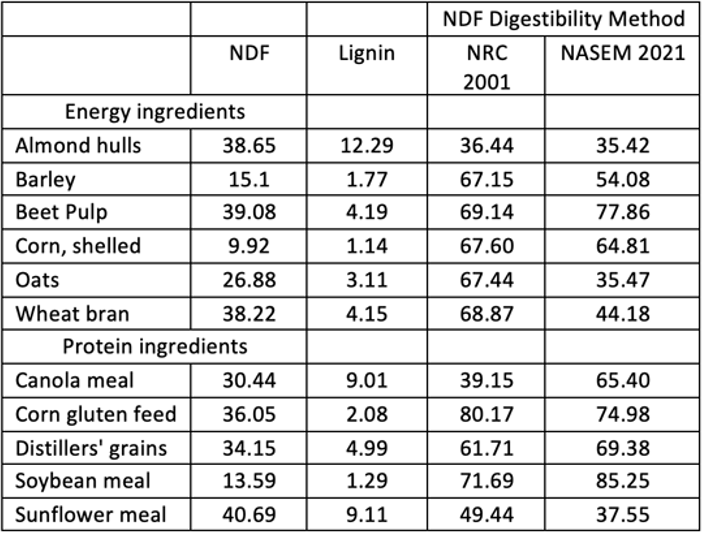

November 2022
First published in Dairy Business
Written by: Brittany Wood
I am often told by dairy nutritionists that canola meal “feeds better than my formulas predict.” Usually, that is an indication that the nutrient values of the feed are incorrect. Although canola meal is a protein ingredient, it brings with it a certain amount of other key nutrients and supplies energy.
Usually, forages are carefully analyzed for nutrient content, and diets are formulated around the forage. Interestingly, it is not uncommon to use file or book values for the concentrate ingredients. In fact, about two-thirds of the diet energy comes from these concentrates. How correct are the values we are using?
The National Research Council Publication “Nutrient Requirements of Dairy Cattle 7th Edition” (NRC, 2001) was often viewed as the gold standard for feeding dairy cows. This was recently updated and replaced by the National Academies of Sciences, Engineering and Medicine as “Nutrient Requirements of Dairy Cattle 8th Edition” (NASEM 2021). An important change was made to how energy values are assigned to ingredients.
NRC (2001) used a factorial method to estimate digestibility and from that, net energy. The values were derived by determining the digestibility of protein, neutral detergent fiber (NDF), other carbohydrates and fat, and these values are applied to the estimation of net energy. NASEM (2021) uses a similar approach. However, the main differences between the two involves the determination of NDF digestibility. With the NRC (2001) method, lignin is used to estimate the digestibility of NDF. The more lignin an ingredient had, the less NDF would be digested. The equation used is:
Digestible NDF= 0.75 * (NDF – Lignin)* [(1-(Lignin/NDF)0.667)]
In contrast the NASEM (2021) computation of NDF digestibility is determined using an invitro 48-hour digestibility value. The digestibility is therefore determined rather than estimated and should be more accurate.
Are there major differences? To find out, I accessed the Dairy One Interactive Feed Ingredient Database (www.dairyoneservices.com/feedcomposition/) and selected some typical ingredients.
Values were available for NDF, lignin and 48-hour in vitro NDF digestibility. NDF digestibility was calculated using the above lignin equation. Thereare several points to be made by this exercise:
Table 1. Comparison NDF digestibility determined using the NRC (2001) approach as well as the NASEM (2021) method (File values courtesy of Dairy One Forage Laboratory)

One reason that some ingredients may feed better or worse than predicted may be because the file values being used are incorrect and need to be updated. For ingredients that are highly variable, or locally available only, it might be worthwhile to send samples for NDF digestibility. Like forages, accurate values for concentrate ingredients contribute to the consistency we all like to see in our dairies. Better decisions regarding which ingredients to purchase and include in rations can be made when the nutrient composition and likely energy value is correct.
This article was funded in part by the Government of Canada under the Canadian Agricultural Partnership’s AgriMarketing Program.